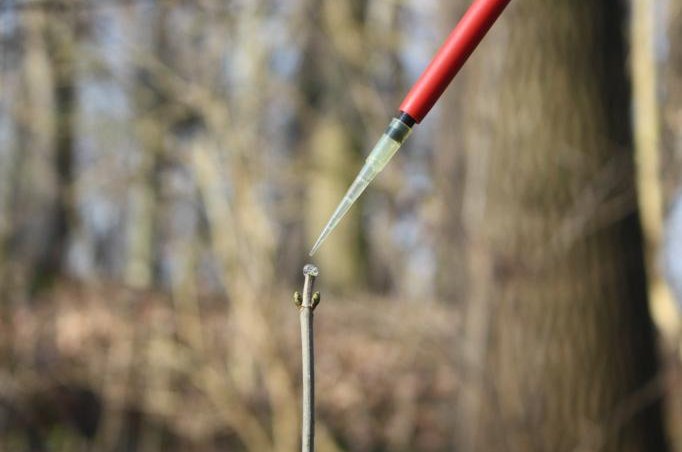Researchers triggered a defensive response from young trees by depositing drops of roe deer saliva on open wounds. Photo by Bettina Ohse/Leipzig University
LEIPZIG, Germany, Sept. 12 (UPI) -- Trees can tell whether their buds were snapped off by the wind or nipped away by a hungry deer. New research suggests trees can recognize the saliva of roe deer.
Roe deer can cause serious damage to deciduous trees, thwarting the regeneration attempts of several hardwood species. But trees like beeches and maples don't go without a fight.
As scientists at Leipzig University and the German Center for Integrative Biodiversity Research found, young saplings have defense mechanisms to prevent roe deer browsing. When a tree's bud is chewed, it begins to produce more salicylic acid, a hormone that triggers the production of tannins.
The tannins cause the deer to lose their appetite for the tree's buds.
But how do the trees know when to deploy their defenses?
The new research suggests young beech and maple trees release extra tannins when the saliva of a roe deer is detected.
In their study, researchers found a entirely different hormonal response when buds were broken off by hand.
"If a leaf or a bud snaps off without a roe deer being involved, the tree stimulates neither its production of the salicylic acid signal hormone nor the tannic substances," researcher Bettina Ohse explained in a news release. "Instead, it predominantly produces wound hormones."
Scientists triggered the trees' defensive response by rubbing saliva on torn buds.
"Following this initial fundamental research, it would now be interesting to also examine other tree species and their defence strategies against roe deer," said Ohse. "If some turn out to be better defended, these species could possibly be used more in forests in the future."
Researchers published their new findings in the journal Functional Ecology.















